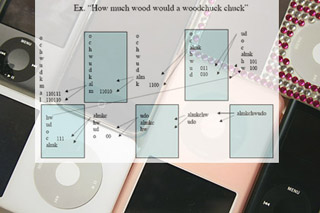
This course explores the mathematical foundations of digital media. For instance, see recitations 6 and 7 for an explanation of MP3 compression using the phrase "How much wood can a woodchuck chuck?" (iPod photo courtesy of >> GUM <<.)
Instructor(s)
Prof. Rosalind W. Picard
Dr. V. Michael Bove
Dr. Quinn Smithwick
(Teaching Assistant)
MIT Course Number
MAS.160 / MAS.510 / MAS.511
As Taught In
Fall 2007
Level
Undergraduate / Graduate
Course Description
Course Features
Course Description
This class teaches the fundamentals of signals and information theory with emphasis on modeling audio/visual messages and physiologically derived signals, and the human source or recipient. Topics include linear systems, difference equations, Z-transforms, sampling and sampling rate conversion, convolution, filtering, modulation, Fourier analysis, entropy, noise, and Shannon's fundamental theorems. Additional topics may include data compression, filter design, and feature detection. The undergraduate subject MAS.160 meets with the two half-semester graduate subjects MAS.510 and MAS.511, but assignments differ.
Other Versions
Other OCW Versions
Archived versions: ![]()


